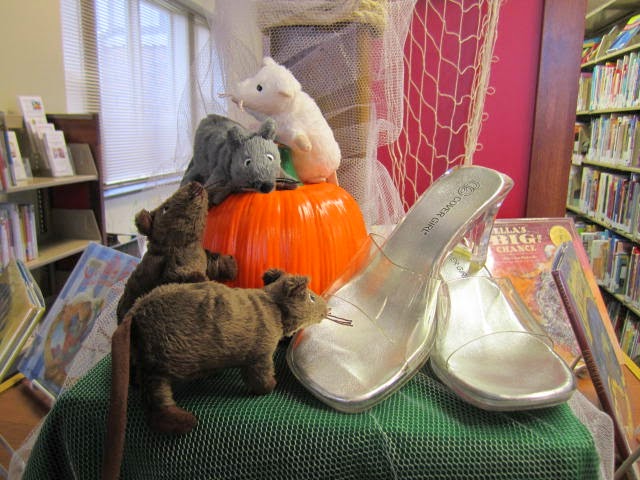 Our most recent Maker program was one that I've had on my radar for ages now: Making tote bags out of old t-shirts. I'd seen versions of this project floating around Pinterest for ages and I heard a little buzz about a library or two that did this project at a conference last year, and I decided that it was finally time to give this one a go myself.
Our most recent Maker program was one that I've had on my radar for ages now: Making tote bags out of old t-shirts. I'd seen versions of this project floating around Pinterest for ages and I heard a little buzz about a library or two that did this project at a conference last year, and I decided that it was finally time to give this one a go myself.If you were to use Google or Pinterest to search for "t-shirt bags" you would easily find TONS of tutorials. Some versions of this project are more involved than others in terms of finishing. There is even a way to do this as a no-sew project, which is great if you do not have access to a sewing machine and don't have the ambition to do hand sewing with needle and thread. The tutorial that I decided to use as a basis for this program was this one. I liked that the finishing was pretty minimal, which would make the project easy for my teens and tweens to complete in a short amount of time. But it also included one sewn seam on the bottom, which I appreciated.
In my advertising for this event I tried to make it clear that all participants needed to bring their own shirt to use for this project. This makes the finished product much more personal for everyone, plus it saves me the trouble of needing to procure the shirts. I sent a reminder email to everyone who had signed up out a few days before the program and asked that anyone who wouldn't be able to bring their own shirt contact me as soon as possible so that we could work something out. No one contacted me, and everyone who attended (4 teens and 3 tweens) brought a shirt with them.
To do the project, we pretty much followed the instructions in the tutorial exactly as written. I gave everyone a pair of scissors to cut the sleeves and neck of the shirts. Fabric scissors definitely would have been ideal since they are sharper and easier to use on fabric, but we made do with the regular scissors that we had on hand. Only one participant had trouble with the cutting but was able to get it done with a little help.
I brought in my own sewing machine from home and showed everyone the basics of how to use it. Each participant was able to sit at the machine and stitch the bottom hem themselves. I was impressed that about half of my participants had done some basic sewing on a machine before, and these people caught on especially quickly. Even those who had never seen a machine before figured everything out pretty easily with some instruction. Sewing a straight seam is actually not terribly difficult or time consuming even for a beginner, and it was very exciting for everyone - even those who had used a sewing machine before - to use this piece of equipment. Because sewing one seam is pretty quick one machine was enough to go around for my small group, but someone with a much larger group might want to try to get a second machine for people to use.
As I instructed everyone, I also pointed out a few areas where a more professional seamstress might work extra hard to make the finished product really nice (sewing finishing hems along the bag's opening and handles, for example). But we also talked about how we weren't professionals and why skipping some of these steps was okay for our purposes. The teens and tweens seemed to think this was interesting and I'm glad that I was able to bring in this brief "real world" application to this simple DIY project.
For the most part, everyone finished their t-shirt bags in about 15 minutes. Most of the participants used their bags to carry books home after the program. I call that a success, and I would definitely consider running this program again in the future.















